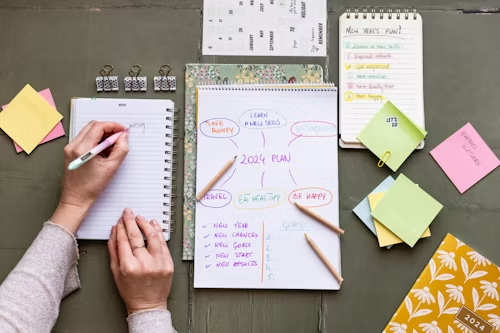Phone:
(701)814-6992
Physical address:
6296 Donnelly Plaza
Ratkeville, Bahamas.

Have you ever asked yourself why your to-do list stays half-finished even though you’ve been “busy” all day?
Maybe you were checking emails, talking on the phone, and switching between tabs non-stop. But by evening, nothing feels fully done. That’s where the idea of multitasking gets questioned.
It may look smart on the surface, but is it helping? Or is there a better way to use your time without rushing and still getting everything done?
At first, multitasking sounds like doing more in less time. People often say, “I’m handling emails while eating,” or “I’m attending meetings and replying to messages.” But when you look closely, it’s not always two things happening well at the same time.
It’s more like switching attention quickly from one task to another. And every time you switch, your focus shifts and needs time to come back.
Multitasking doesn’t mean your brain is doing two thinking tasks at once. It just means you’re hopping from one to the other. It feels like you’re saving time, but in reality, you’re just stretching tasks longer.
Think about writing an email and answering a phone call at the same time. You might end up typing something that doesn’t make sense or forgetting what the person said on the call. It’s because your brain is not built to handle two thinking jobs at once. It prefers one thing at a time.
When you do one task fully, your mind gets into a flow. That’s when you work faster, with fewer breaks, and better quality. Switching out of that flow takes your brain a few seconds or minutes to adjust. That small delay adds up by the end of the day.
Sometimes, people feel proud of multitasking because it makes them feel active. There’s always something happening, switching apps, talking, replying, checking, it feels like movement. But that doesn’t always mean progress. It’s like running around in circles but staying in the same place.
Also, phones and apps are built to grab attention. Notifications, pings, and messages all push you to look away from what you’re doing. It feels natural to multitask, but with a little planning, you can change that feeling and start using time management better.

Time doesn’t stop. But what you do in each hour can change everything. Instead of jumping between five things at once, doing one task well and then moving to the next brings more peace, better results, and fewer chances of forgetting things.
Here are a few ways you can manage time smartly without putting too much pressure on yourself.
Start by picking just one thing to do. It could be something small, like replying to emails, or something big, like writing a report. Give it your full focus for 20 to 30 minutes. Keep other distractions away, phone on silent, other tabs closed. You’ll be surprised at how quickly and neatly the task gets done.
If it’s a longer task, take short breaks. This helps your mind stay fresh. Work for 30–45 minutes, then pause for 5–10 minutes. During the break, stretch, walk, or just sit quietly. Then come back to the next task.
Sometimes, people try to do everything at once because they’re not sure what’s more important. A simple to-do list can help clear your head. Write down what needs to be done today. Not everything, just the main 3 to 5 tasks. Start from the top and go one by one. This way, you know what to do next and don’t waste time thinking about it again and again.
Use a small diary or even your phone notes. Keep it visible. At the end of the day, it feels really good to tick off things you’ve finished.
If some tasks keep repeating, like checking emails or answering messages — give them a fixed time. Maybe check emails in the morning, after lunch, and once before closing work. Don’t keep checking every 10 minutes. Same with social media, meetings, or messages. Setting a time helps you stay in control.
When you give time blocks for these tasks, they stop cutting into other important work. You also stop feeling pulled in many directions.
A clean space can do small magic. When your desk or screen has too many things, your eyes and mind get distracted. Try to keep only what you need in front of you. If you’re working on a file, close other files. If you’re reading something, keep the phone aside. These small habits make a big difference.
When things are neat, it feels calm. And when you feel calm, you finish work faster and with fewer errors.
You don’t need to say yes to everything at once. Sometimes, people come to you with small tasks, and you feel like doing them quickly. But those small tasks often break your flow. It’s okay to say “I’ll do this after I finish this task.” People usually understand when you say it politely.
This small habit protects your focus. It keeps your mind from getting pulled in five directions.
Let’s say you need to prepare a report and also respond to 10 emails. If you try to do both together, the report will stretch, and emails may get half-hearted replies.
But if you first give 30 minutes to the report and finish most of it, then switch to emails, both jobs will be done with more care. You’ll feel satisfied and less tired.
Now imagine your whole day working like that, one task after the other, full focus, small breaks in between, and fewer open tabs or distractions. You’ll feel more relaxed even during busy days.
Also, you’ll start noticing how your energy works. Some people think better in the morning, others after lunch. Plan your toughest task in the time when your mind feels strongest. Save lighter tasks like admin work for later. This small change keeps your energy fresh.
Nobody is asking you to become a robot or finish 20 tasks in one day. The idea is simple, do fewer things at once, but do them properly. That brings better results, less stress, and more clarity. And it gives you free time to enjoy without feeling guilty.
You can plan your day with little breaks, focus times, and gentle routines. Maybe start the day by noting the top three things. Give each one a fixed time. Block small breaks. Close the day by checking what you finished. These small steps build a calm, useful habit over time.
Multitasking may look busy, but it doesn’t always give real results. You already have enough time. You just need to use it one task at a time, with full attention and calm planning. Give yourself space to work, space to rest, and space to live.
By doing less at once, you’re not falling behind; you’re moving ahead. And with less pressure, more control, and simple focus, your day can feel much better.
So, the next time you feel like doing everything at once, take a breath. Pick one thing. Do it with attention. Then move to the next. That’s how smart time management works — not with speed, but with clarity.